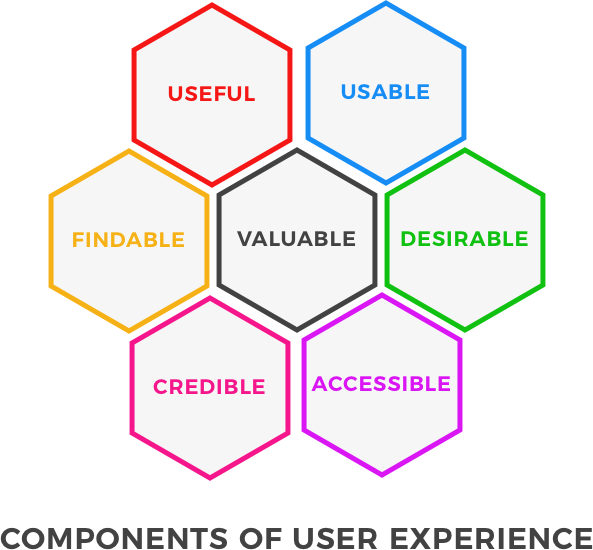What IS User Experience Design

Let’s talk about what user experience design (UXD) is.
It’s a reasonably broad term. It incorporates all aspects of a person’s experience with something. It could be an interactive system, an application, a website, a physical product that you can hold in your hand, the experience you have with a car, …. Something you can touch, you can act upon. It’s present in industrial design, graphic design, product design.
It’s the emotion that surrounds the use of a product, its physical characteristics. The things that give you cues as to what you’re supposed to do, when, and how.
It’s also referring to a practice. A way to generate predictive, desirable design considering human beings. How we are wired, how we interpret things, how do we consider things to be good or bad.
Basically UXD is taking all these considerations and molding it into an experience that produces a positive outcome, that generates a value.
Formal definition of UXD
Let’s look at two visions of the formal definition of UX from two critical figures in this discipline. Don Norman is one of the precursors of the term UX in computer design and worked during the ’90s in the user experience architect’s office at Apple. He wrote one of the most founding book in the discipline called “The Design of Everyday Things”.
"User experience is everything that touches upon your experience with the product. And it may not even be near the product, it may be when you're telling somebody else about it. It's everything, the way you experience the world, the way you experience your life, the way you experience the service/product." - Don Norman
Jesse James Garrett created a company called Adaptive Path specialize in UX and he wrote “The Element of User Experience”, also a significant authoritative source.
"User experience simply refers to the way a product behaves and is used in the real world. A positive user experience is one in which the goals of both the user and the organization that created the product are met." - Jesse James Garrett
The Make-up of UXD in a system
UXD is present in every component that represents any system, whether it is a website or a program in an automated car. It’s the sum of a simple equation which is:
business goals + user goals + user interface + back-end processes = user experience.
The UX honeycomb

UXD is also a collection of multiple, intentional attributes that are designed into the process and the product, that determine if the final result has a positive user experience. In order for something to have a positive user experience, it needs to be useful, desirable, accessible, credible, findable, usable, and all these things put together make it valuable.
This collection of attributes that we call UX honeycomb was initially proposed by Peter Morville, author of “Information Architecture for the World Wide Web”, a referential book in the discipline. All good product that we bother to use in our day to day life has all these attributes.
UXD is defined by multiple activities
UXD is a combined result of multiple activities conducted by one person sometimes or a team of people, each of whom has different specialties. Even in the case of a small group or one person, all these activities play a role in UXD.
Things like user research, which consist of finding out who we are creating this for, what they want from it, what they expect from it, and what’s going to be valuable for them.
Interaction design, determine how they interact with it, and to make sure they understand how to interact with it.
Visual design, is what they see in front of them on a screen, dashboard, table, …
Information architecture which is the content they need to perform a specific task, that they need to understand, and how it is organized, how it is prioritized.
Front-End Development, assemble all the complex logic and data that drive interactive application.
Writing, which is a crucial component of Design. Words and images go hand in hand, and the proper visual treatment of words is part of what makes an experience useful, engaging, and compelling.
Finally, User testing, which is present all along the design process to make sure that all the decisions about how something is going to behave, how much content it contains, and what it’s going to look like are going to be validated by the user. We show to people and allow them to use a prototype or interact with a sort of experimental product, and we observe them to validate assumptions, understand behaviors, see if they like or dislike and why.
UXD means problem-solving
Design is all about identifying the right problem to solve. What matters most, what has the most impact, the most measurable value. UXD essentially explore feasible solutions to design problem. How we can address this and how realistic is it that we can provide a solution to this very particular, precise, complex problem. Because every aspect of a human is complex, and we are very difficult to please.
So basically, a user experience designer job consists of uncovering user needs and business goals and finding the sweet spot where the two areas overlap. Find the point where what you do is unique, exciting, and elevate the product above the competition.
He ensures that a product meets or exceeds user expectations, increase adoption, use, and loyalty while reducing customer support need.
He also determines the feasible high-quality products that can be created and implemented.
UXD ensures people use things
We people, sometime use things when:
- It’s easy to figure out how to accomplish our task.
- The steps involved in performing the task - no matter how complex - seems simple.
- Our sense of effort and cognitive load (mental effort to process information) are minimized.
- We have an immediate, clear feedback provided for interactions
- Our potential for error is minimized, and when we do make a mistake, the system is forgiving.
All those elements we need to verify are defined in Don Norman’s book, “The Design of Everyday Things”.
UXD is a balancing act
To ensure that a product or system is innovative(successful), we must balance competing needs. It must be desirable, does anybody want it, does it going to matter to people? It must be feasible, can we do it? It must be viable, does it going to be ignored or adopted, does it have good growth built into it?
That’s not an easy task, and that’s why UXD is so important.
More…
If you wish to learn more about UXD or find the source of my articles, I recommend to read the book from Don Norman “The Design of Everyday Things” or go check blog posts on the Nielsen Norman Group’s website.
Do not hesitate to reach out on twitter @MsterMF if you have questions or feedback.